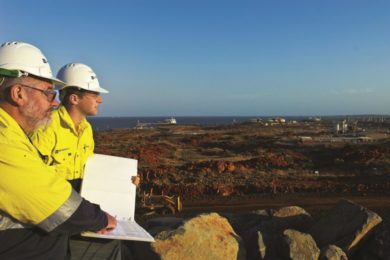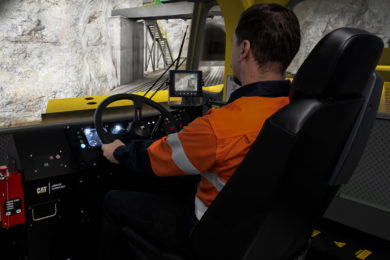Xstrata Nickel’s Koniambo project in New Caledonia is commissioning as it prepares for first ore by the end of 2012. The project design relies heavily on the use of Profibus DP, a digital communications bus, to link field instrumentation and electrical motor controls to the ABB Distributed Control System that is used for control and monitoring of the facilities. Ian Pearce, Chief Executive of Xstrata Nickel, said in November: “We are very excited about the progress being made at Koniambo, including the successful delivery of Line 1. It is a testament to our dedicated project and operation teams at Koniambo Nickel that we can now focus on moving to first production. “With the completion of Line 1, the majority of our construction resources will now be devoted to the second production line, which is forecast to be complete in the second quarter of 2013. Koniambo Nickel will ramp up to a steady state annual production run rate of 60,000 t of nickel in ferronickel within two years, by the end of 2014.
“Koniambo Nickel’s mine is already operating with the geological integrity of our resource forecasts intact. The ore-preparation plant and overland conveyer are in operation and the team is working to ensure we have 30,000 t of on-spec ore ready for the metallurgical plant by the end of the year.”
Gary O’Connell, Project Technical Director, along with Thierry Bonnet de Larbogne, KNS Process Control Manager, requested XPS Process Control group to assist in troubleshooting of the Profibus installations when problems were experienced during pre-operations testing. The Process Control group has two certified Profibus professionals (Alan Hyde & Phil Nelson) within the group.
Alan Hyde explains that digital communications buses such as Profibus have advantages in that they enable functionality such as remote configuration and diagnostics of devices from the same systems that are used to monitor the process value or status information. At the same time there are potential cost savings in installation as a single twisted-pair cable can be used to communicate to multiple devices. However the Profibus design guidelines must be adhered to, particularly with respect to communications speed and network topology, and the installation guidelines must be followed to ensure good signal quality and robustness to electromagnetic interference. Deviating from the guidelines makes communication errors very likely.
A two week visit to the Koniambo site was made in August. This visit followed a brief visit two weeks earlier by a Profibus expert from Australia. The purpose of the XPS visit was to conduct further investigations of other Profibus networks to confirm the extent of the problems, and to determine if any other issues were present within the design and installation. Troubleshooting of digital communication buses requires different tools and techniques to traditional hardwired analog and discrete signals. One of the best tools for Profibus installations is Procentec’s ProfiTrace tool. This is a combination of software and hardware that allows a connection to be made to the bus to monitor the communications traffic. An integrated digital oscilloscope allows the quality of the electrical signal and the waveform to be analysed. Using this tool, XPS along with personnel from KNS and Hatch, were able to identify issues in other networks not previously tested. A number of tests were conducted to verify the behavior of different network topologies at various communication speeds, along with the effect of individual hardware components.
At the end of the visit XPS was able to make a number of recommendations to improve the robustness of the Profibus networks and to achieve reliable communications – as intended by the design.










